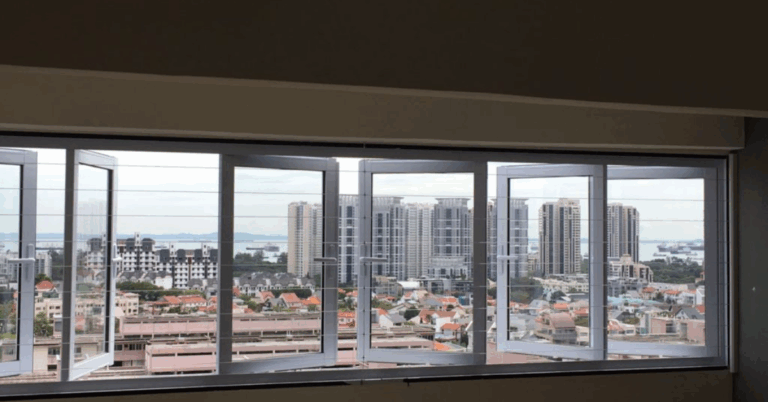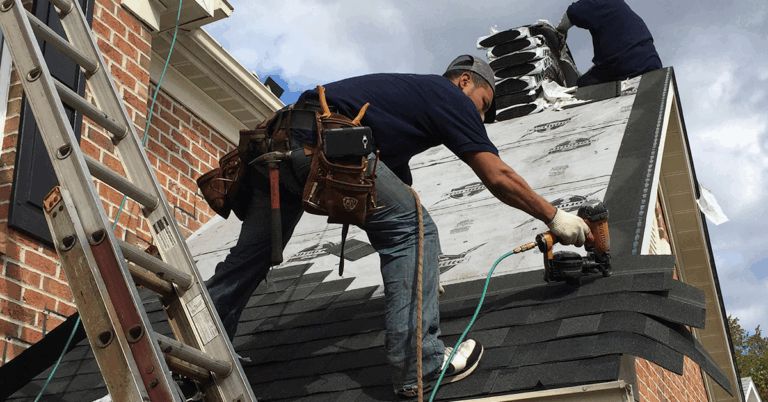Private Security: A Pillar of Modern Protection
In an age marked by rising risks, evolving threats, and greater demand for safety, Private Security has emerged as a critical component in safeguarding people, property, and operations. Whether it’s guarding residential complexes, monitoring corporate campuses, or managing crowd control at major events, private security services empower organizations and individuals to maintain order and peace of mind beyond what traditional public law enforcement can often provide. As threats become more complex and stakeholders more risk-sensitive, the strategic deployment of private security solutions is no longer a luxury it’s a necessity.
The Rising Importance of Private Security in the 21st Century
Public policing and governmental security agencies continue to play an essential role in maintaining law and order. However, they are increasingly overburdened in fast-growing urban environments, critical infrastructure zones, private estates, and event venues. This gap often presents opportunities for threats such as theft, unauthorized entry, vandalism, or even coordinated attacks. Private security fills this gap by offering focused, responsive, and customizable layers of protection to meet specific needs.
Several macro trends are fueling growth in the private security sector:
-
Urbanization and densification: As cities expand and vertical living and working spaces proliferate, the complexity and scale of protection increase.
-
Rising assets and material value: More resources, critical equipment, and expensive infrastructure mean more things worth protecting.
-
Heightened threat awareness: Incidents of theft, cyber-physical attacks, and organized crime have increased both real and perceived risks.
-
Regulatory and compliance pressure: Corporations and institutions must meet safety and security standards imposed by authorities, investors, or insurance bodies.
-
Demand for 24×7 protection and real-time monitoring: Clients expect constant vigilance, rapid response, and transparency in operations.
In this context, a well-structured private security service can be transformative offering customized protection, risk mitigation, and peace of mind.
Core Services in Private Security
Private security is not a one-size-fits-all affair. A robust security provider offers a range of specialized services tailored to the site, purpose, and threat profile. Common service verticals include:
Uniformed Guard Services
Trained guards manage critical day-to-day functions such as controlling entry and exit points, conducting patrols, verifying visitors, and responding to incidents. They serve as the primary deterrent and first line of defense across residential, commercial, institutional, and industrial environments.
Personal Security Officers (PSOs)
For high-net-worth individuals, executives, or persons under threat, PSOs provide close protection. Their role involves route planning, threat assessment, advance security surveys, and coordination with local authorities if necessary.
Event & Crowd Management
Large concerts, exhibitions, conferences, or public gatherings require discipline, crowd control, access screening, and emergency response protocols. Security providers design ingress and egress plans, emergency routes, and control measures to prevent hazards.
Armed & High-Risk Deployment
In environments requiring a higher level of force (e.g. critical infrastructure, sensitive installations, banks, high-threat zones), authorized armed personnel may be deployed under strict compliance. These teams are often composed of ex-defense or trained law enforcement professionals.
Bouncer / Venue Security
Nightclubs, bars, entertainment venues, stadiums, or theaters necessitate crowd control, conflict de-escalation, and entry management. Well-trained security teams maintain safety without inflaming tension.
Technology-Enabled Integration
Modern private security doesn’t rely solely on human presence. It pairs guards with smart systems GPS tracking, biometric attendance, visitor management systems, surveillance cameras, mobile incident reporting tools to maximize oversight and accountability.
An Ethical & Compliant Foundation
Trust is the bedrock of a credible private security service. Clients must have confidence that service providers adhere to laws, regulations, and professional standards. Key aspects of a responsible security provider include:
-
Licensing and regulatory compliance: Guarding services must operate under relevant government licenses and adhere to sector rules.
-
Rigorous personnel screening: Background verification, criminal record checks, medical evaluation, and identity validation are essential.
-
Structured training and refresher courses: Personnel should receive induction training in first aid, fire safety, emergency response, crowd control, and specialty modules relevant to their deployment.
-
Transparent reporting and escalation frameworks: Duty rosters, incident logs, digital reporting, and real-time alerts build client trust.
-
Ethical conduct and de-escalation culture: Guard behavior must reflect professionalism, restraint, respect for human rights, and clear escalation protocols.
When a private security provider gets these fundamentals right, clients gain not just protection, but accountability.
Tailoring Solutions by Industry
Different sectors demand different forms of protection. Below is how private security can be tailored to various industry verticals:
-
Residential Complexes: Controlled visitor access, night patrols, CCTV monitoring, parking area supervision, and emergency call response.
-
Corporate & Commercial Campuses: Lobby management, visitor reception, access control per floors or zones, perimeter patrols, and backup support.
-
Educational Institutions: Safe campus perimeters, student drills, gate screening, visitor tracking, and coordination with local police in emergencies.
-
Healthcare Facilities: Managing patient influx, ambulance zones, entry screening, perimeter control, and security of critical areas like pharmacies, labs, or ICU wings.
-
Warehouses & Manufacturing Units: Theft prevention, inventory protection, cargo movement oversight, perimeter control, and shift transitions.
-
Retail Spaces & Malls: Protecting against shoplifting, monitoring customer flows, parking area management, and coordinating loss prevention.
-
Public Sector & Events: Government buildings, exhibitions, fairs, civic gatherings ensuring disciplined public access, dignitary protection, and emergency reaction.
The key is customizing service modules, guard deployment strategies, and technology layers to match each industry’s risk profile and operational demands.
Technology as a Force Multiplier
The modern private security model fuses human expertise with digital tools for better oversight and responsiveness. Some technology integrations that elevate security operations include:
-
GPS Patrol Monitoring: Ensures guards follow prescribed routes, helps detect deviations or slippage in service, and enables audit trails.
-
Biometric & Digital Attendance: Guard check-ins, shift transitions, and real-time presence are captured via fingerprint, facial recognition, or mobile app systems.
-
Visitor Management Systems (VMS): Digitally log guest entries, issue visitor badges, collect ID proofs, and time-stamp ingress/egress.
-
Surveillance & Video Analytics: CCTV systems, sometimes with AI analytics, detect unauthorized access, loitering, or suspicious behavior.
-
Mobile Reporting Tools: Guards report incidents, upload images, raise alerts, or send status updates to supervisors and control rooms instantly via secure apps.
These systems not only enhance transparency but also reduce response times, auditing gaps, and operational friction.
The Process of Deployment & Oversight
Deploying an effective private security solution is not simply sending guards to a site. It follows a planned, methodical sequence:
-
Site & Risk Assessment
A security provider conducts a detailed survey of the premises, studies traffic flows, vulnerability points, access routes, and historical incident data. -
Customized Security Plan
Based on risk assessment, a deployment blueprint is created guard numbers per shift, route maps, high-risk zones, escalation protocols, resource allocation, and layering with technology. -
Personnel Allocation & Training
Only after selecting screened and trained personnel are they deployed. Specialized briefings tailored to that site and environment are conducted. -
Control Room & Monitoring Setup
A command center (internal or provider’s) monitors guard movement, incident escalations, performance metrics, and responds to alerts in real time. -
Performance Audits & Feedback Loops
Regular inspections, audits, client feedback, and issue tracking ensure that service standards remain consistent and improvements are made iteratively. -
Scale & Flexibility
The provider should be able to scale up or down deployment, rotate teams, and adapt to changes in threat or environment swiftly.
Benefits & Value Proposition
Outsourcing or engaging a dedicated private security partner offers multiple advantages:
-
Focused expertise and specialization
Security companies bring tactical knowledge, threat awareness, and domain experience which most organizations cannot internally replicate. -
Cost efficiency
The overhead of recruitment, training, license compliance, equipment procurement, technology systems, and management falls on the service provider, not the client. -
Operational continuity
With standby teams, backup arrangements, and 24/7 monitoring, private security ensures uninterrupted oversight even in emergencies or staff leave. -
Increased deterrence
The visible presence of uniformed guards, surveillance systems, and enforced protocols acts as a psychological and practical deterrent to potential wrongdoers. -
Scalability & flexibility
Whether downsizing or managing a new event, security deployment is adjustable according to evolving needs. -
Real-time transparency
Clients receive dashboards, incident logs, biometric reports, and control room support — creating accountability and trust.
Challenges & Mitigation
As with any service industry operating in fragile or high-stakes domains, private security faces hurdles:
-
Quality variance: Some providers compromise on training or personnel screening to cut costs. Mitigation: demand proof of qualifications, audits, and references.
-
Legal liabilities: Use of force, rights violations, or guard misconduct may expose both provider and client. Mitigation: clear contracts, liability clauses, standard operating procedures (SOPs), and compliance oversight.
-
Technological dependence: Systems may fail, sensors may misbehave, or connectivity might be disrupted. Mitigation: fallback protocols, redundancies, and manual override mechanisms.
-
Scalability under stress: Large-scale emergencies or sudden threats can stress provider capacity. Mitigation: have surge strategies, backup rosters, and mutual aid agreements.
-
Public perception: In some contexts, private security may be viewed skeptically or as overbearing. Mitigation: ensure guards are trained in de-escalation, professional conduct, and human rights sensitivity.
By anticipating and addressing these challenges, private security providers and their clients can create safer and more resilient environments.
The Future of Private Security
Looking ahead, several trends are set to shape private security in the coming years:
-
Artificial Intelligence & Analytics: AI-driven surveillance, facial recognition, behavioral analytics, and anomaly detection will reduce false positives and augment human vigilance.
-
Drones & Robotics: Unmanned aerial systems and robotic guards may assist in perimeter sweeps, remote inspection, or monitoring hard-to-reach zones.
-
Integration with Cybersecurity: As physical and digital security converge, private security firms may partner with or incorporate cyber defenses to protect smart buildings, IoT devices, and access control systems.
-
Hybrid Workforce Models: Cross-trained security personnel able to operate surveillance systems or tech modules alongside traditional guard duties.
-
Community & Neighborhood Alliances: In residential or community spaces, private security may increasingly coordinate with local policing, civic groups, or resident volunteers.
-
Sustainability & ESG Alignment: Clients may prefer security providers that follow environmental, social, and governance (ESG) norms, ensuring green operations, worker welfare, and ethical practices.
The providers that can adapt to these shifts combining technological foresight, human resource excellence, and regulatory agility will lead the next phase of private security.
Conclusion
Private security has transcended its role as a mere auxiliary function it now stands at the intersection of protection, governance, and operational assurance. In an era of intensifying threats and higher expectations, aligning with a professional, compliant, and technology-enabled security partner is a strategic imperative for organizations and individuals alike. When executed right, private security becomes not just a service, but a foundation of trust, continuity, and peace.







